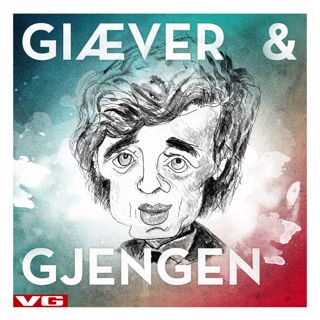
Part 5: Can Liberal Democracy Survive in Europe?
Across Europe, populists are saying that it’s not democracy they aim to discard, but liberalism. To end our series, we returned to Germany, the country at the heart of a liberal Europe, to see if the rejection of liberalism had also taken hold there.Guests: Katrin Bennhold, the Berlin bureau chief for The New York Times, and Clare Toeniskoetter and Lynsea Garrison, producers for “The Daily,” went to an election party in Berlin for the far-right party Alternative for Germany. For more information on today’s episode, visit nytimes.com/thedaily. Background reading: Germany’s political establishment looks increasingly fragile after the European Parliament elections.As anti-Semitic crime rises in Germany, new forms of old hatreds are stoking fear for the nation’s estimated 200,000 Jews.Katrin Bennhold offers her main takeaway after 10 days on the road: “Europe cannot be taken for granted. But neither can its demise.” Subscribe today at nytimes.com/podcasts or on Apple Podcasts and Spotify. You can also subscribe via your favorite podcast app here https://www.nytimes.com/activate-access/audio?source=podcatcher. For more podcasts and narrated articles, download The New York Times app at nytimes.com/app.
14 Jun 201928min

Part 4: Poland’s Culture Wars
In Poland, a nationalist party has been in power for four years. We went to Warsaw, the capital, and Gdansk, the birthplace of a movement that brought down Communism, to see how this government has changed democratic institutions. Guests: Katrin Bennhold, the Berlin bureau chief for The New York Times, and Clare Toeniskoetter and Lynsea Garrison, producers for “The Daily,” spoke with Jaroslaw Kurski, a newspaper editor; Magdalena Adamowicz, a politician and the widow of a liberal mayor who was murdered; and Danuta Bialooka-Kostenecka, an official with the governing Law and Justice party. For more information on today’s episode, visit nytimes.com/thedaily. Background reading: Poland’s nationalists aren’t seeking to take the country out of the European Union, but to take the European Union out of Poland.With national elections approaching, both the government and its opponents have sought to shape the country’s historical memory.Poland’s governing party has made opposition to gay rights a cornerstone of its campaigning, escalating fears that the divisive rhetoric could translate to violence. Subscribe today at nytimes.com/podcasts or on Apple Podcasts and Spotify. You can also subscribe via your favorite podcast app here https://www.nytimes.com/activate-access/audio?source=podcatcher. For more podcasts and narrated articles, download The New York Times app at nytimes.com/app.
13 Jun 201933min

Part 3: ‘Italy First’
In Italy, hard-right populists have moved from the fringes to become part of the national government. Now, the country is on the front lines of a nationalist resurgence in Europe. To understand why, we spent a day with Susanna Ceccardi, a rising star of the far-right League party. Guest Host: Katrin Bennhold, the Berlin bureau chief for The New York Times, and Clare Toeniskoetter and Lynsea Garrison, producers for “The Daily,” hit the campaign trail with Ms. Ceccardi in Tuscany. For more information on today’s episode, visit nytimes.com/thedaily.Background reading:Ms. Ceccardi is among a group of nationalist politicians seeking to break the European Union from the inside.A victory for the anti-immigrant League party in the European Parliament elections gave Matteo Salvini, the party’s leader and Italy’s interior minister, the strongest claim to the leadership of Europe’s populists. Subscribe today at nytimes.com/podcasts or on Apple Podcasts and Spotify. You can also subscribe via your favorite podcast app here https://www.nytimes.com/activate-access/audio?source=podcatcher. For more podcasts and narrated articles, download The New York Times app at nytimes.com/app.
12 Jun 201931min

Part 2: The French Rebellion
President Emmanuel Macron of France had been viewed as the next leader of a liberal Europe. But when the Yellow Vest movement swept the country, protesters took to the streets, rejecting him as elitist and questioning the vision of Europe that he stood for. In Part 2 of our series, we traveled to a city in northern France to hear from some of these protesters. Guest Host: Katrin Bennhold, the Berlin bureau chief for The New York Times, and Clare Toeniskoetter and Lynsea Garrison, producers for “The Daily,” met with Yellow Vest demonstrators in Reims. For more information on today’s episode, visit nytimes.com/thedaily.Background reading:For some followers of the Yellow Vest movement, Europe embodies everything they have come to hate: shuttered factories, stagnating wages and a young banker-turned-president in favor of deeper integration.In elections last month for the European Parliament, the far-right leader Marine Le Pen won in the rural, depressed and deindustrialized areas of northern, south-central and eastern France that gave rise to the Yellow Vest revolt. Subscribe today at nytimes.com/podcasts or on Apple Podcasts and Spotify. You can also subscribe via your favorite podcast app here https://www.nytimes.com/activate-access/audio?source=podcatcher. For more podcasts and narrated articles, download The New York Times app at nytimes.com/app.
11 Jun 201928min

Part 1: The Battle for Europe
The decades-long plan to stitch together countries and cultures into the European Union was ultimately blamed for two crises: mass migration and crippling debt. Together, those events contributed to a wave of nationalism across Europe. In a five-part series this week, we take a look at some of the movements aiming to disrupt the E.U. from within. Guest: Katrin Bennhold, the Berlin bureau chief for The New York Times. For more information on today’s episode, visit nytimes.com/thedaily.Background reading:Before the European Parliament elections last month, Katrin Bennhold and producers of “The Daily” set out on a 10-day trip to find out what Europe means to Europeans today.The results of the elections indicated that the struggle over the future direction of the European Union would only intensify. Subscribe today at nytimes.com/podcasts or on Apple Podcasts and Spotify. You can also subscribe via your favorite podcast app here https://www.nytimes.com/activate-access/audio?source=podcatcher. For more podcasts and narrated articles, download The New York Times app at nytimes.com/app.
10 Jun 201922min

A New Way to Solve a Murder, Part 2: The Future of Genetic Privacy
The police identified a suspect in a double murder after combing through DNA profiles on a website designed to connect family members. We look at what his trial will tell us about the future of genetic genealogy in solving crimes. Guests: Heather Murphy, a New York Times reporter, spoke with CeCe Moore, a genetic genealogist, and Curtis Rogers, a creator of the genealogy website GEDMatch. For more information on today’s episode, visit nytimes.com/thedaily. Background reading: The case of William Earl Talbott II, who is accused of killing a Canadian couple in Washington State 32 years ago, could result in legal precedents involving the use of genetic genealogy techniques by law enforcement. Subscribe today at nytimes.com/podcasts or on Apple Podcasts and Spotify. You can also subscribe via your favorite podcast app here https://www.nytimes.com/activate-access/audio?source=podcatcher. For more podcasts and narrated articles, download The New York Times app at nytimes.com/app.
7 Jun 201928min

A New Way to Solve a Murder, Part 1: The Genetic Detectives
A year after police used a genetic database to help identify a suspect in the Golden State Killer case, the same technique has been used to arrest dozens of people. Now, for the first time, one of those cases is headed to trial. In Part 1 of a two-part series, we look at the tool that is transforming law enforcement and testing the limits of privacy. Guests: Heather Murphy, a New York Times reporter, spoke with Curtis Rogers, a creator of the genealogy website GEDMatch; Peter Headley, a detective with the San Bernardino County Sheriff’s Department; and Barbara Rae-Venter, a genetic genealogist. For more information on today’s episode, visit nytimes.com/thedaily.Background reading:Using a technique that relies on DNA submitted to online genealogy sites, investigators have solved dozens of violent crimes. But some question the ethics and legality of the technique.GEDMatch, a free site that began as a side project, has upended how investigators across the country are approaching cold cases.Read about how genetic sleuthing through GEDMatch helped a woman who had been kidnapped as a child recover her identity. Subscribe today at nytimes.com/podcasts or on Apple Podcasts and Spotify. You can also subscribe via your favorite podcast app here https://www.nytimes.com/activate-access/audio?source=podcatcher. For more podcasts and narrated articles, download The New York Times app at nytimes.com/app.
6 Jun 201925min

This Drug Could End H.I.V. Why Hasn’t It?
Dr. Robert Grant developed a treatment — a daily pill known as pre-exposure prophylaxis, or PrEP — that could stop the AIDS crisis. We look at why that hasn’t happened. Guests: Dr. Grant, who has been working on H.I.V. treatment and prevention for over 30 years, and Donald G. McNeil Jr., a science and health reporter for The New York Times. For more information on today’s episode, visit nytimes.com/thedaily. Background reading: Gilead Sciences, the maker of Truvada, the only drug approved to prevent H.I.V. infection, will donate enough of the drug to supply 200,000 patients, but critics questioned the company’s motives.The high cost of drugs remains a major obstacle to ending the AIDS epidemic.Here’s more information about PrEP from the Centers for Disease Control and Prevention website. Subscribe today at nytimes.com/podcasts or on Apple Podcasts and Spotify. You can also subscribe via your favorite podcast app here https://www.nytimes.com/activate-access/audio?source=podcatcher. For more podcasts and narrated articles, download The New York Times app at nytimes.com/app.
5 Jun 201927min





















